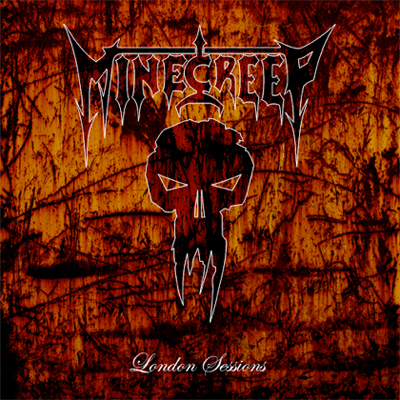
VIO-LENCE, Nothing to Gain (1993, Bleeding Hearts)
The skull:
This album was eventually reissued later with a mushroom cloud on the cover, but c’mon, that’s such an overused image! Now a skull, there’s something you don’t see every day. Here, a skull is superimposed over the Earth. Rad! Along with skulls sporting horns/antlers, skulls embedded in rock walls, and the ol’ skull ‘n’ crossbones, skulls in/on Earth are now an official Big Dumb Skulls Subset. (See the Arbitrater skull, Skull232). Apparently this album title is a pessimistic comment on the human plight, telling us there’s nothing to gain; that for all our progress, all our fighting, bickering and money-making, there’s nothing to gain, that death will greet us all, rendering everything we do pointless. Including creating album covers with skulls on them and writing a blog about album covers with skulls on them. Oh, the humanity…
The music:
This album was recorded in 1990 but didn’t find release until thrash reached its commercial nadir in 1993. But even in 1990, despite featuring all five members from the prior two Violence (or Vio-lence) albums, the band took a turn toward groove and slower tempos, a la Forbidden’s Green or Sepultura’s Chaos A.D. Those two albums don’t matter much to me, and I don’t like Nothing to Gain very much either. The energy and mania of their first two are in rare supply here, capped by the uncharacteristically mundane delivery of vocalist Sean Killian. If you’ve heard the earlier albums, you’ll no doubt agree that Killian was anything but mundane. (They band were killer live, too. Saw them twice on the first album tour and will never forget either show.) Sure, they were aligning with the zeitgest of 1990 with this more corralled/controlled sort of sound, and they weren’t the only Cali-thrash band to work at slower paces come the 1990s, but this is not a great album by any stretch. It’s not entirely worthless either. Perry Strickland is a killer drummer, proven by some seriously bad-ass syncopation in “Twelve Gauge Justice.” This song most resembles the band’s older, faster material, and comes after opener “Atrocity,” a dull crawler of a track. “Atrocity” is inconceivably bland, a difficult thing to sit through at a seemingly eternal 5:02. It’s arguably worse than the worst moments from Overkill’s I Hear Black or Testament’s The Ritual. You get where this album is going, right? On the plus side, Nothing to Gain features some cool mid-tempo rifferamas, insane whammy-excessive guitar solos, and Strickland’s terrific drumming. But even at its best, there’s something flawed in the production, all cheap and clunky sounding. A punchier, tighter sound would have been more appropriate for the groove that infests this album, although I’m not actually endorsing that sort of jump-metal nonsense. (It’s no surprise where Robb Flynn would go, “artistically,” after exiting Vio-lence.) And let’s go back to Killian, who sounds normal throughout much of the album. Killian? “Normal?” WTF? But I dunno, I’ve lost a few degrees of enthusiasm for this band over the years. As much as I like the first two albums, the gang vocals seem less attractive as time goes on, so even those I have to go into all prepared, fully in the mood for some ripped-jeans ‘n’ white-high-tops thrash. That mood happens occasionally too, but more often I’ll travel south of heaven for Dark Angel or Kreator…so there’s very little chance I’d ever be more in the mood for Nothing to Gain over Eternal Nightmare or Oppressing the Masses. Yes, what we have here is just another sub-par but not-entirely-crappy post-thrash album from those confusing 1990s.
— Friar Wagner









